#Frank Pitts
Text
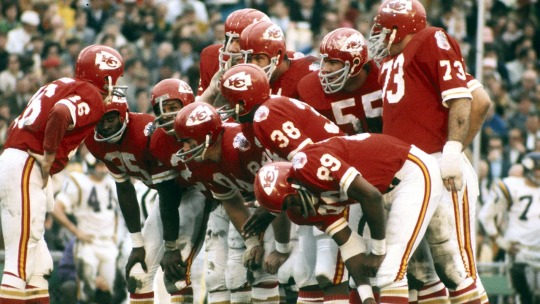
The Kansas City Chiefs winning their first Super Bowl, 1970. They beat the Minnesota Vikings 23-7.
#Superbowl IV#NFL#vintage#Len Dawson#Mike Garrett#Frank Pitts#Dave Hill#E. J. Holub#Otis Taylor#Wendell Hayes#Ed Budde#Mo Moorman#football#New Orleans#Tulane stadium
33 notes
·
View notes
Text
the way Thomas gushing about Brad Pitt is too funny 😂
just love how enthusiastic and unashamed he is professing his love for the actor (albeit to a super fine creature indeed)
20 notes
·
View notes
Text







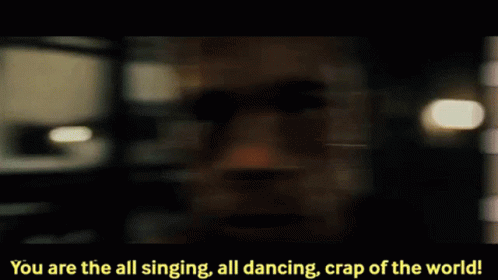
united no. 6 (9-5 is suicide) - ft willz // fight club - chuck palahnuik & david fincher
#ft willz#frank iero#frnkiero#mcr#fight club#fight club parallel#parallel#web weaving#parallels#movie parallels#edward norton#brad pitt#david fincher#david fincher movies#90s movies#9 to 5#ft willz poems#myspace#frank iero poetry#frank iero and the patience#frank iero and the cellabration
106 notes
·
View notes
Text
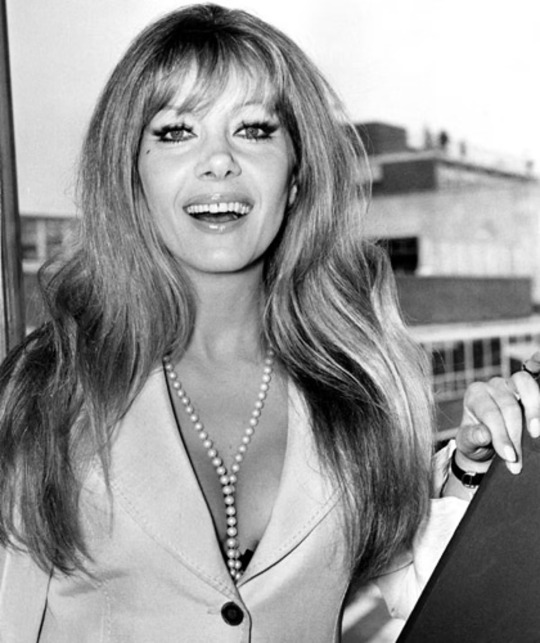
Celebrating Ingrid Pitt
Ingrid Pitt (born Ingoushka Petrov; 21 November 1937 – 23 November 2010) was a Polish-British actress and writer best known for her work in horror films of the 1970s.
Ingoushka Petrov was born in Warsaw, Poland, one of two daughters of a father of German Jewish descent and a Polish Jewish mother. During World War II, she and her mother were imprisoned in Stutthof concentration camp in Sztutowo, Free City of Danzig (present-day Nowy Dwór Gdański County, Pomeranian Voivodeship, Poland) but escaped. In Berlin, in the 1950s, Ingoushka married an American soldier, Laud Roland Pitt Jr., and moved to California. After her marriage failed she returned to Europe, but after a small role in a film, she took the shortened stage name "Ingrid Pitt", keeping her former husband's surname, and headed to Hollywood, where she worked as a waitress while trying to make a career in films.
In the early 1960s, Pitt was a member of the prestigious Berliner Ensemble, under the guidance of Bertolt Brecht's widow Helene Weigel. In 1965, she made her film debut in Doctor Zhivago, playing a minor role. In 1968, she co-starred in the low-budget science-fiction film The Omegans, and in the same year, played British spy Heidi Schmidt in Where Eagles Dare opposite Richard Burton and Clint Eastwood.

Her work with Hammer Film Productions elevated her to cult figure status. She starred as Carmilla/Mircalla in The Vampire Lovers (1970), based on Joseph Sheridan Le Fanu's novella Carmilla, and played the title role in Countess Dracula (1971), based on the legends about Countess Elizabeth Báthory. Pitt also appeared in the Amicus horror anthology film The House That Dripped Blood (1971) and had a small part in The Wicker Man (1973).

During the 1980s, Pitt returned to mainstream films and television. Her role as Fraulein Baum in the 1981 BBC Playhouse Unity, who is denounced as a Jew by Unity Mitford (Lesley-Anne Down), was uncomfortably close to her real-life experiences. Her popularity with horror film buffs had her in demand for guest appearances at horror conventions and film festivals. Other films in which Pitt has appeared outside the horror genre are: Who Dares Wins (1982) (or The Final Option), Wild Geese II (1985) and Hanna's War (1988). Generally cast as a villainess, her characters often died horribly at the end of the final reel. "Being the anti-hero is great – they are always roles you can get your teeth into."

In the 1980s she also reinvented herself as a writer. Her first book, after a number of ill-fated tracts on the plight of Native Americans, was the 1980 novel, Cuckoo Run, a spy story about mistaken identity. "I took it to Cubby Broccoli. It was about a woman called Nina Dalton who is pursued across South America in the mistaken belief that she is a spy. Cubby said it was a female Bond. He was being very kind."
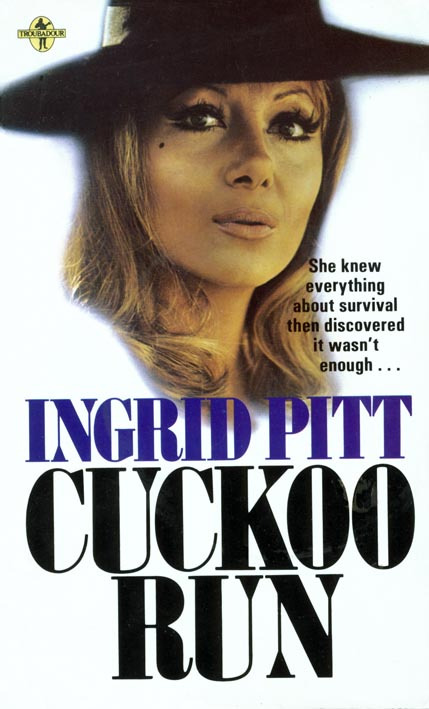
In 1999, her autobiography, Life's a Scream (Heinemann) was published, and she was short-listed for the for her own reading of extracts from the audio book.
The autobiography detailed the harrowing experiences of her early life—in a Nazi concentration camp, her search through Europe in Red Cross refugee camps for her father, and her escape from East Berlin, one step ahead of the Volkspolizei. "I always had a big mouth and used to go on about the political schooling interrupting my quest for thespian glory. I used to think like that. Not good in a police state."

Pitt died in a south London hospital on 23 November 2010, a few days after collapsing, and two days after her 73rd birthday, from congestive heart failure.

Seven months before she died, Pitt finished narration for Ingrid Pitt: Beyond the Forest (2011), an animated short film on her experience in the Holocaust, a project that had been in the works for five years. Character design and storyboards were created by two-time Academy Award-nominated filmmaker Bill Plympton. The film is directed by Kevin Sean Michaels; co-produced and co-written by Jud Newborn, Holocaust expert and author, "Sophie Scholl and the White Rose"; and drawn by 10-year-old animator, Perry Chen.
vimeo
#Ingrid Pitt#The Vampire Lovers#Countess Dracula#Academy Award#Anne Frank#Holocaust#Nazi#Where Eagles Dare#Kevin Sean Michaels#Hammer Films#The Wicker Man#The House That Dripped Blood#concentration camp#Stutthof concentration camp
122 notes
·
View notes
Text
MHI as Various Posts.
Because I'm re-reading it and I'll probably be posting a lot about it.
Owen:

Julie:

Trip:

Holly:

Harbinger:

Myers:

Franks:
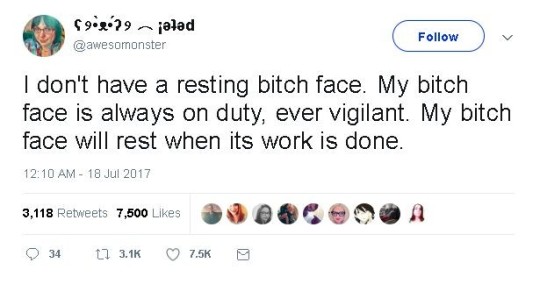
#I love this series#been working on more memes for them#and posting it here so i dont get caught#though we arent very avtive on here#oh well#mhi#monster hunter international#larry correia#owen z pitt#julie shackleford#earl harbinger#agent franks#agent myers#holly newcastle#trip jones#book series#mhi memes#text posts memes
13 notes
·
View notes
Text
My superpower is identifying famous people only by their roles in shows I've watched.
Examples include:
Chevy Chase in Community
Bruce Willis in Friends season 7
Lin Manuel Miranda in Brooklyn 99
Brad Pitt in a Friends thanksgiving episode
Tommy Tiernan in Derry Girls
Danny Devito in It's Always Sunny
#Like it's not even funny#Someone will mention Paul Rudd#And I'll be like “he was in Friends”#Chevy Chase#nbc community#Bruce Willis#Friends#Lin Manuel miranda#brooklyn nine nine#Brooklyn 99#Brad Pitt#tommy tiernan#Derry girls#Da Joe#danny devito#it's always sunny in philadelphia#Iasip#frank reynolds#Perplexed confusion original post
33 notes
·
View notes
Text
(This is a re-post since last time I accidentally set it for a day instead of a week…)
#seinfeld#tv polls#j peterman#mickey abbott#frank costanza#estelle costanza#morty seinfeld#helen seinfeld#jackie chiles#david puddy#justin pitt#jack klompus#kenny bania#uncle leo#tim whatley#newman#wayne knight#bryan cranston#sandy baron#patrick warburton#jerry stiller#sitcoms#1990s tv#1990s television#tv series
3 notes
·
View notes
Text
"BLEAK HOUSE" (1985) Review
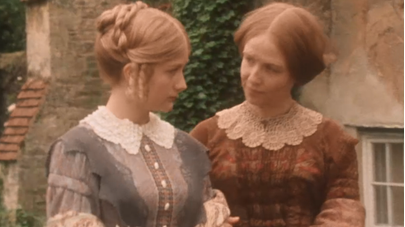
"BLEAK HOUSE" (1985) Review
In less than I year, I have developed this fascination with the works of Charles Dickens. How did this come about? I do not know. I have seen previous Dickens movie and television adaptations in the past. But ever since last year, I have been viewing these adaptations with a vengeance. And one of them turned out to be "BLEAK HOUSE", the 1985 adaptation of Dickens' 1852-53 novel.
Adapted by Arthur Hopcraft, this eight-episode miniseries conveyed the affects of Jarndyce v Jardyce, a long-running legal probate case involving the existence of more than one will. The heirs and their descendants have been waiting decades for the court to determine the legal will, for the sake of a large inheritance. Among those affected by the Jarndyce v Jardyce case are:
*John Jarndyce - a wealthy English landowner, who happens to be the proprietor of the estate, Bleak House. Jarndyce had inherited it from his uncle Tom Jarndyce, who had went mad waiting for a verdict on the case before committing suicide.
*Richard Carstones - Tom Jarndyce's grandson and John Jarndyce's cousin, who also became one of the latter's legal wards, and a potential beneficiary of the Jarndyce v Jardyce case.
*Ada Clare - Tom Jarndyce's granddaughter and Mr. Jarndyce's cousin, who also became one of his legal wards, and a potential beneficiary of the Jarndyce v Jardyce case. She and Richard, also cousins, became romantically involved.
*Esther Summerson - one of the novel's main characters and orphan, who became Mr. Jarndyce's ward following the death of her previous guardian, Miss Barbury, who had also been her biological aunt. She joined the Bleak House household as Ada's companion and Mr. Jarndyce's housekeeper after he became the guardian of Richard and Ada.
*Honoria, Lady Dedlock - the wife of baronet Sir Leicester Dedlock and a beneficiary of the Jarndyce v Jardyce case. She is also the younger sister of Miss Barbury and Esther's illegitimate mother.
*Captain John Hawdon aka Nemo - a former British Army officer, who became an impoverished law writer and drug addict. He is also Lady Dedlock's former lover and Esther's illegitimate father. His penmanship on one of the Jarndyce v Jardyce affidavit attracts Lady Dedlock's attention.
*Mr. Bill Tulkinghorn - Sir Leicester's ruthless lawyer, who noticed Lady Dedlock's reaction to the affidavit. This leads him to investigate her past and possible connection to Hawdon aka "Nemo".
*Miss Flite - An elderly woman living in London, whose family had been destroyed by a long-running Chancery case similar to Jarndyce v Jarndyce. This has led her to develop an obsessive fascination with Chancery cases, especially the main one featured in this story. She quickly befriended Esther, Richard, Ada and Mr. Jarndyce.
As one can see, these characters represented plot arcs that connect to the Jarndyce v Jarndyce case. As one of the beneficiaries of the Jarndyce case, Richard becomes obsessed with the verdict. He seemed more interested in depending upon the Jarndyce verdict to provide him with an income rather than pursue a profession. This obsession eventually led to a clash between and Mr. Jarndyce, who has tried to warn him not to get involved with the case. Another clash formed between Lady Dedlock and Mr. Tulkinghorn, due to his determination to find proof of her past with Nemo and the conception of their child. A clash that proved to create even more damaging for a good number of people, than the one between Mr. Jarndyce and Richard. In the midst of all this stood Esther, who served as an emotional blanket for several characters - especially the inhabitants at Bleak House, a potential romantic figure for three men (ironic for a woman who was not supposed to be a great beauty), and the center of the Lady Dedlock-Nemo scandal.
For years, 1985's "BLEAK HOUSE" had been viewed as the superior adaptation of Dickens' novel. The first novel aired back in 1959. But a third television adaptation that aired in 2005 had managed to overshadow this second adaptation's reputation. But this is not about comparing the three adaptations. I am focusing only the 1985 miniseries. If I might be blunt, I believe screenwriter Arthur Hopcraft and director Ross Devenish created one of the better Charles Dickens I have personally seen. Granted, one might use the source material - the 1952-53 novel - as the reason behind the miniseries' top quality. But I have seen my share of poor adaptations of excellent source material . . . and excellent adaptations of poor or mediocre novels and plays. And I would find this excuse too simply to swallow. Hopcraft and Devenish could have easily created a poor or mediocre adaptation of the novel. Fortunately, I believe they had managed to avoid the latter.
With eight episodes, Hopcraft and Devenish did an excellent job in conveying Dickens' exploration into the chaos of the legal landscape in 19th century Britain, especially cases involving the Chancery courts. One might consider the longevity of Jarndyce v Jarndyce rather exaggerated. However, I speak from personal experience that an extended length of time in such a case is more than possible. But what I thought the effect of Jarndyce v Jarndyce and similar cases in Dickens' story seemed very interesting. In Richard Carstone's case, I suspect his own hubris and upbringing had allowed the case to have such a toxic effect upon him. He had been raised as a gentleman. Which meant he was not expected to work for a living. But since he did not possess a fortune or an estate - like Mr. Jarndyce - Richard never lost hope that the court would rule the Jarndyce v Jarndyce case in his favor, allowing him to inherit a great deal of money. Although it took another case to send Miss Flyte mentally around the bend, I found it interesting that her obsession with Chancery cases led her to attach her interest to the Jarndyce case beneficiaries.
The Jarndyce case also produce a group of leeches in the forms of attorneys like Mr. Tulkinghorn and his obsession with assuming control over the Dedlocks and Mr. Vholes, who had sucked a great deal of money from Richard in exchange for his legal services. The series also featured the vicious moneylender Mr. Smallweed, who helped Mr. Tulkinghorn in the latter's campaign against Lady Dedlock; and Mr. Jarndyce's "friend", Harold Skimpole, who had not only encouraged Richard to pursue a greater interest in the Jarndyce case, but also had accepted a "commission" from Vholes to recruit the young man as a client. Would I regard William Guppy as a leech? Sometimes. I had noticed that one particular story arc was missing - namely the story arc regarding the philanthropist Mrs. Jellyby, her daughter and Esther's friend, Caddy and the Turveydrop family. This did not bother me, for I have never been a fan of that particular arc.
However, I also noticed that "BLEAK HOUSE" featured a few moments in which important plot points had been revealed through dialogue or shown after the fact. Audiences never saw Skimpole convince Richard to hire Mr. Vholes. Instead, Mr. Jarndyce had revealed this incident after it happened. The whole scenario regarding Dr. Allan Woodcock being a survivor of a shipwreck was handled as a past event revealed by the good doctor himself. Hopcraft's script never stretched it out in the same manner as Dickens' novel or the 2005 miniseries. Audiences never saw George Rouncewell's release from jail, for which he had been incarcerated for murder. Instead, Episode Seven began with George in jail and later, near the end, found him serving as Sir Leicester's valet without any information on how that came about.
"BLEAK HOUSE" featured a few other writing and direction decisions by Hopcraft and Devenish that I found . . . well, questionable. Why did the pair solely focused on Lady Dedlock in the series' penultimate episode and Richard and the Jarndyce v Jarndyce case in the final one? Would it have been so difficult for them to switch back and forth between the two arcs in those final episodes? I found Inspector Bucket's resolution to the story's murder mystery rather rushed. I would have liked to see Bucket eliminate suspects before solving the case. In Bucket's final scene with the killer, Hopcraft left out that moment from the novel when the latter had the last scathing word on British society, leaving the police detective speechless. This erasure dimmed the impact of Dickens' message and made the killer even more of a caricature. I had some issues with how Devenish directed certain performances. How can I put this? I found them a bit theatrical.
I have one last issue - namely Kenneth MacMillan's cinematography. I realize that in "BLEAK HOUSE", fog represented institutional oppression and human confusion and misery in society. Unfortunately, I feel that MacMillan may have been heavy-handed in utilizing this symbol in the series. It is bad enough that photography featured a fuzzy element that seemed popular in many period productions in the 1970s. But thanks to MacMillan's use of fog in the story, there were many moment in which I could barely see a damn thing. And I found that irritating.
Aside from a few quibbles, I had no real issues with the performances featured in "BLEAK HOUSE". One of those quibbles proved to be the performances for some of the secondary cast members. How can I say this? The exaggerated and wooden performances for some of the cast members brought back memories of some of the minor actors' bad performances in 1982 miniseries, "THE BLUE AND THE GRAY". I must admit that I did not care for Pamela Merrick's portrayal of Lady Dedlock's French maid, Madame Hortense. Her performance bordered and then surpassed the lines of caricature - as some British actors/actresses tend to do. Charlie Drake's portrayal of the moneylender Smallweed tend to waver between a pretty solid performance and pure caricature. Although there were moments when I found her portrayal of the eccentric Miss Flyte a bit hammy, I must admit that Sylvia Coleridge gave a well-done performance. Chris Pitt's performance as Jo, the crossing sweeper boy struck me as very poignant. Yet, at the same time, he seemed so passive that at times, I found it difficult to believe he had survived on the streets on his own, for so long. Jonathan Moore, whom I had remembered from the 1988 television movie, "JACK THE RIPPER"; did an excellent job of conveying the ambitious and self-interested nature of law clerk William Guppy. However, his portrayal of Guppy seemed to lack the character's comedic nature. Denholm Elliot gave a very interesting performance as Esther, Richard and Ada's guardian, John Jarndyce. On one level, I found his portrayal of the kind-hearted Mr. Jarndyce as first-rate. Excellent. But there were moments, including the character's famous quote following Jo's death, when Elliott's Mr. Jarndyce seemed to resemble one of those "angry young men" characters from a John Osbourne play. I found those moments very odd.
However, there were performances that did not leave me scratching my head. Colin Jeavons and Anne Reid gave very competent performances as the grasping solicitor Mr. Vholes and George Rouncewell's close friend Mrs. Bagnet, respectively. Ironically, Jeavons had portrayed Richard Carstone in the 1959 adaptation of "Bleak House" and Reid had portrayed Mrs. Rouncewell in the 2005 television adaptation. Both Suzanne Burden and Lucy Hornak gave solid performances as Esther Summerson and Ada Clare. And yet, both actresses managed to rise to the occasion with some brilliant moments. Burden's moment came, following Esther's realization that she had survived the smallpox. As for Hornak, she gave an excellent performance during Ada's soliloquy about her love's growing obsession with the Jarndyce case. Brian Deacon gave a passionate performance as Dr. Allan Woodcourt, the penniless doctor in love with Esther. Ian Hogg gave a very solid, yet commanding performance as Inspector Bucket. I really enjoyed Sam Kelly's warm portrayal of the law-stationer, Mr. Snagsby. Bernard Hepton gave one of the most colorful performances of his career as the alcoholic rag and bone shopkeeper, Krook. Dave King gave a very solid performance as the loyal, yet intimidating and conservative former Army sergeant George Rouncewell. I found George Sewell's performance as Sergeant Rouncewell's older brother, the wealthy Mr. Rouncewell not only entertaining, but very memorable. I thought Robin Bailey did an excellent job portrayed the haughty and proud Sir Leicester Dedlock.
But there were four performances that really impressed me. One came from Philip Franks, who did an excellent job of conveying Richard Carstone's emotional journey from John Jarndyce's warm and friendly young man, to the more embittered one, obsessed with the Jarndyce case. T.P. McKenna gave a delicious performance as Mr. Jarndyce's self-involved friend, Harold Skimpole, who proved to be quite the emotional (and financial) vampire. I thought Peter Vaughan was superb as the Dedlocks' sinister lawyer, Mr. Tulkinghorn. I was amazed by how Vaughn managed to combine the character's dedication to protecting his client Sir Leicester and his penchant for assuming control over others. If I had voted for the best performance featured in "BLEAK HOUSE", I would choose Diana Rigg's portrayal of the tragic Honoria, Lady Dedlock. I believe the actress gave a brilliant performance as the mysterious, yet complicated baronet's wife, whose cool demeanor hid a great deal of emotions and a personal secret. I am shocked and amazed that neither she, Vaughn, McKenna or Franks had ever received any accolades for their performances.
In fact, I am surprised that "BLEAK HOUSE" had only received BAFTA nominations (and won three) . . . and they were in the technical/arts category, aside for the Best Drama Series/Serial. No Primetime Emmy nominations, whatsoever. Was this eight-part miniseries the best adaptation of Charles Dickens' 1852-53 novel? I cannot answer that question. Granted, it had its flaws. But what television or movie production did not? But I cannot deny that "BLEAK HOUSE" was a first-rate miniseries that deserved more accolades than it had received, thanks to Arthur Hopcraft's screenplay, Ross Devenish's direction and an excellent cast led by Suzanne Burden, Denholm Elliott and Diana Rigg.
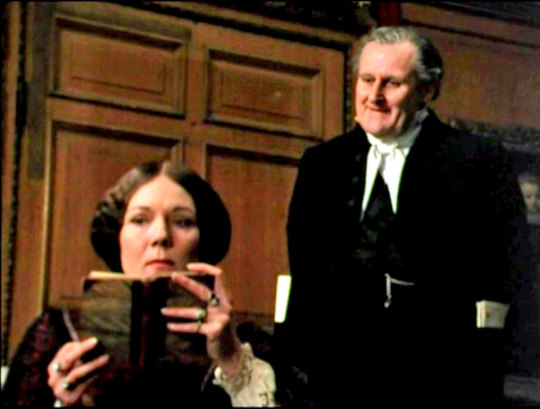
#charles dickens#bleak house#bleak house 1985#arthur hopcraft#ross devenish#suzanne burden#denholm elliott#diana rigg#peter vaughan#philip franks#lucy hornak#colin jeavons#anne reid#dave king#george sewell#robin bailey#brian deacon#chris pitt#sam kelly#ian hogg#jarndyce v. jarndyce#jonathan moore#pamela merrick#sylvia coleridge#charlie drake#bernard hepton#t.p. mckenna#victorian age#period drama#period dramas
4 notes
·
View notes
Text

Brad Pitt at the Frank Ocean’s Concert (2017)
22 notes
·
View notes
Note
I’m going to assume you spend a lot of money on records and concert tickets 😂
I don't go to nearly as many concerts as people might think and I would like to unfortunately, so the concert tickets part is not true... :( Between working almost 60 hour work weeks now. having no energy outside of work lately and living in the middle of Nowhere, PA (so I would have to drive a bit for shows) it IS one of those things I have to, like, plan out ahead of time.
Records though? I am ashamed to admit that is very, very true though LMAO. It's so wild to admit that I literally only had maybe, like, 30 records max at this time last year and now I'm at almost 150... Not a huge collection yet, but it's crazy to see that number jump up like that to me. Record collecting is so addictive, but it's... not cheap. I have spent more money then I would like to say on records in the past year for sure...
Thank you Tristan! :)
#answered#whyfalloutwhenyoucanpanic#It seems my small little city is on the rise for bands coming to perform there though so it's nice to see.#But other then that I would literally have to like drive to Philly Pitt Baltimore NYC (if I'm desperate enough)... Things like that.#Frank came to my tiny little city in 2019 with the FV and that show was... depressing when it came to the turnout.#Great show by all means! It's just that I think the venue anticipated more people then there actually were.#Anyway sorry for the book answer. These are both subjects I can rant about. 😅
6 notes
·
View notes
Text

Oh No You Don’t. “Cool World” (1992)
#90s#paramount pictures#cool world#ralph bakshi#live action#animation#hybrid film#doodles#nails#frank harris#brad pitt#gif#sneeze
23 notes
·
View notes
Text
Honestly I'm glad the BVB album is coming out bewteen legs of the MCR tour I don't know what I'd do if I had to deal with both at the same time
#mcr#my chemical romance#gerard way#ray toro#mikey way#frank iero#black veil brides#andy biersack#andy black#jinxx#jake pitts
6 notes
·
View notes
Text


William dadley
#girlblogger#girl interrupted syndrome#tumblrina#aesthetic#bradussy#brad pitt#waif#girl blogging#bradisrad#father figure#frank ocean
4 notes
·
View notes
Text
also the fucking whiplash that is going to be pittsburgh after this calm and beautiful episode lol
#bill and frank are in love and die together to SOMEONE IS TRYING TO KILL YOU IN DOWNTOWN PITT MOVE YOUR ASS#the last of us hbo#the last of us hbo spoilers
1 note
·
View note
Text
i think amy sosa unlocked my tendency to really like messy women who are deemed unlikable to significant parts of fandom and i am very grateful that she did because messy women (especially the ones of colour) are such a treat to stan and dissect
personally i think people who don't bother giving a chance to these kind of characters are missing out it's way more fun to stan women than men honestly
#there's always wayy more going on with them than people give them credit for#they have their trauma and they either can't or don't behave in the ways society has deemed they can behave#they're always described snappy or bitchy or annoying#and i absolutely love women like that?#and sure ones like elektra and lila tend to and do shit like manipulate but pay attention for five seconds and that's all they've known?#a lot of these characters have reasons that are stated/implied in canon why they are the way they are#but people brush all that off just cause they hurt a man that is really popular or well liked and shit like that#it's really telling when white men who share similar trauma or story beats get propped up though (looks at th reaction to frank vs elektra)#and sure some of them exhibit unhinged behavior#but i adore them nonetheless#amy sosa my beloved#elektra natchios#lila pitts#i'm pretty sure i have more but these three are the ones that popped up first#i've gotten so used to seeing hate for them
5 notes
·
View notes
